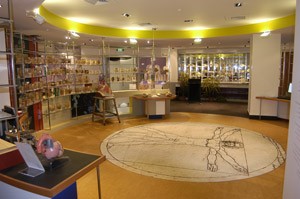What
Critical Incident: A medical student at the University of Auckland has taken photos of specimens of colon and lung cancer from the School of Medical Sciences Pathology Museum, annotated the photos, turned them into a study guide, and posted them on his open access blog, which he uses to collate study notes for himself and to share with other students in the class. There is a no photography rule in this Museum
So What
Using Ehrich's framework, the most relevant competing forces are
- University of Auckland policy that there is to be no photography in the Museum,
- Society and community - some internet users may find such images disturbing, shocking or culturally offensive. On the other hand, the student has created a shared education resource for the benefit of his community of learners, and the outcome of better educated medical students is better doctors and better patient outcomes (public good).
- Global context - other Pathology Museum specimens, in NZ, Australia, and around the world are digitised and open access, such as The University of Otago Pathology Museum, and the University of Western Australia.
This reflects the 21st century trend for digitising and opening access to educational materials to global users. Competing interests in the democratisation of collections by digitisation is discussed in this public lecture from the Professor of Digital Cultural Heritage and Pro Vice dean of King's College London.
https://www.slideshare.net/KDCS/tanner-trinity-jan-2015
https://www.slideshare.net/KDCS/tanner-trinity-jan-2015
? possible demotivational effect on student learning, of reprimanding the student for what they most likely view as altruistic sharing educational activity.
My individual values are to respect the University Policy, other societal cultural norms, and the student's underlying motivation to do good.
Choices, I will have to act. My approach would be an internal, informal, personal approach to the student, to ask for his perspective, acknowledge his intentions, and ask him to reflect on why the University would put such a no photo rule in place. I would offer an alternative to the student to keep up the sharable self study blog, but to switch to using the open access pathology specimen photos from the Universities of Otago and WA.
Implications:
 |
| https://www.weforum.org/agenda/2016/03/21st-century-skills-future-jobs-students/ |
Organisation.
University of Auckland policy upheld, but this identifies a gap between UoA policy and that of similar Universities who have adopted the knowledge sharing online model. Understanding the Univerisity's justification of the current policy is likely to be multifactorial, historical, and involve complex contextual issues I cannot change. From my perspective, my energy and time is better spent finding alternative open access teaching resources for students to use, rather than trying change University policy.
Community
Student peers learning community: awareness of digital use issues is different between institutions, awareness of alternative online resources.
Now What
I will discuss with the Museum curator about making students aware of other online sharable Pathology Museum images to use, to comply with the No Photos policy of UoA Pathology Museum specimens.
References
Ehrich, L. C. , Kimber M., Millwater, J. & Cranston, N. (2011). Ethical dilemmas: a model to understand teacher practice, Teachers and Teaching: theory and practice, 17:2, 173-185, DOI:
No photo icon https://commons.wikimedia.org/wiki/File:Camera-icon.svg
Tanner, S.(Feb 4, 2015) Democratisation of Collections through Digitisation. King's College London. https://www.slideshare.net/KDCS/tanner-trinity-jan-2015
University of Auckland Pathology Museum : https://www.fmhs.auckland.ac.nz/en/faculty/mslc.html
Rea, P., Livingstone, D., Jocks, I. T., & Osnes, C. (2017). Digitisation of Anatomical Specimens and Historical Pathology Specimens for Educational Benefit. In Serious Games and Edutainment Applications (pp. 101-119). Springer, Cham. https://link.springer.com/chapter/10.1007/978-3-319-51645-5_5
University of Auckland Pathology Museum : https://www.fmhs.auckland.ac.nz/en/faculty/mslc.html
University of Otago Pathology Museum. http://pathmuseum.otago.ac.nz/
University of Western Australia Pathology Museum https://healthed.hms.uwa.edu.au/pelc/search.php
World Economic Forum report New Vision for Education: Fostering Social and Emotional Learning Through Technology. https://www.weforum.org/agenda/2016/03/21st-century-skills-future-jobs-students/
10.1080/13540602.2011.539794
University of Western Australia Pathology Museum https://healthed.hms.uwa.edu.au/pelc/search.php
World Economic Forum report New Vision for Education: Fostering Social and Emotional Learning Through Technology. https://www.weforum.org/agenda/2016/03/21st-century-skills-future-jobs-students/
10.1080/13540602.2011.539794



Comments
Post a Comment